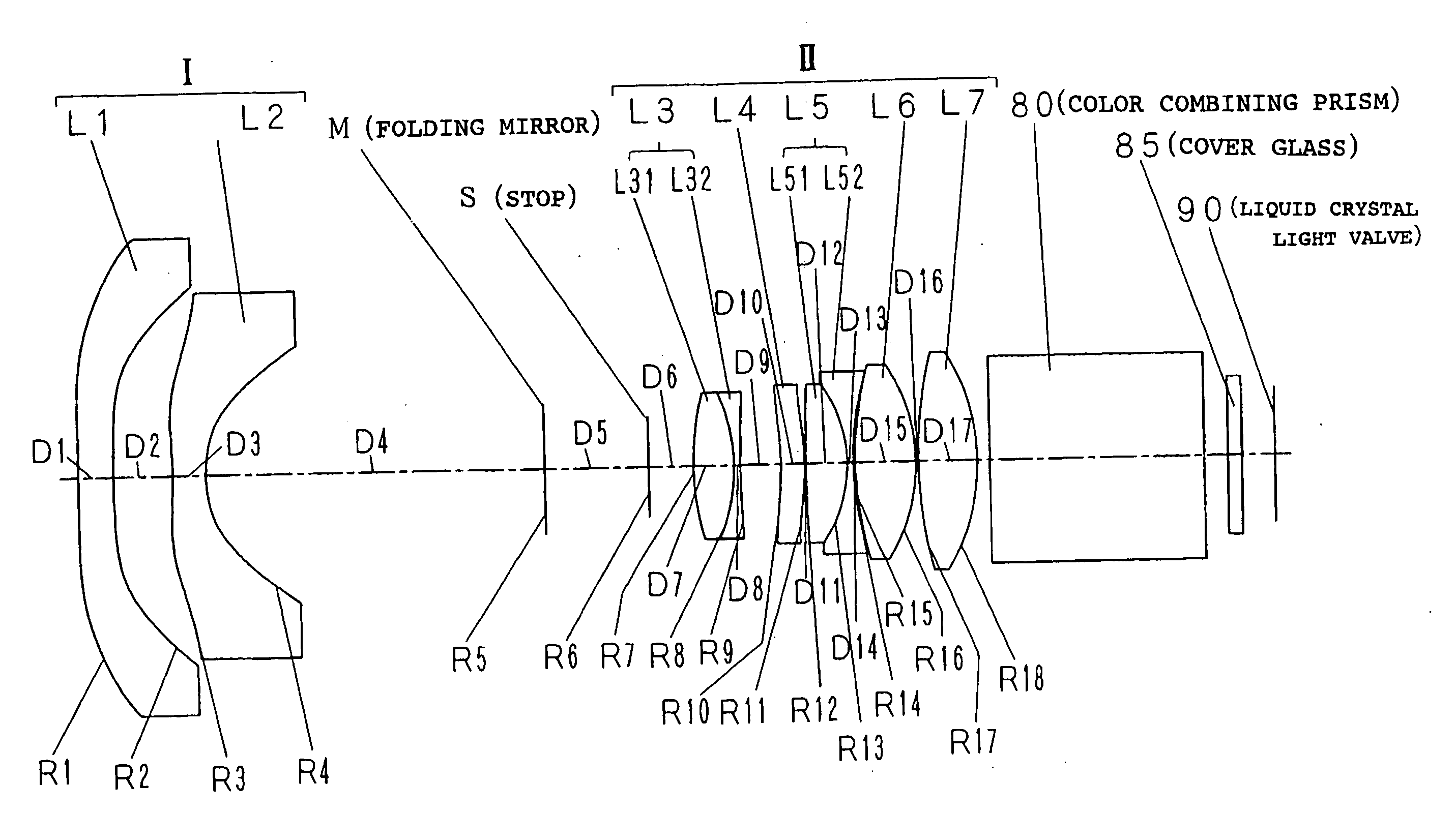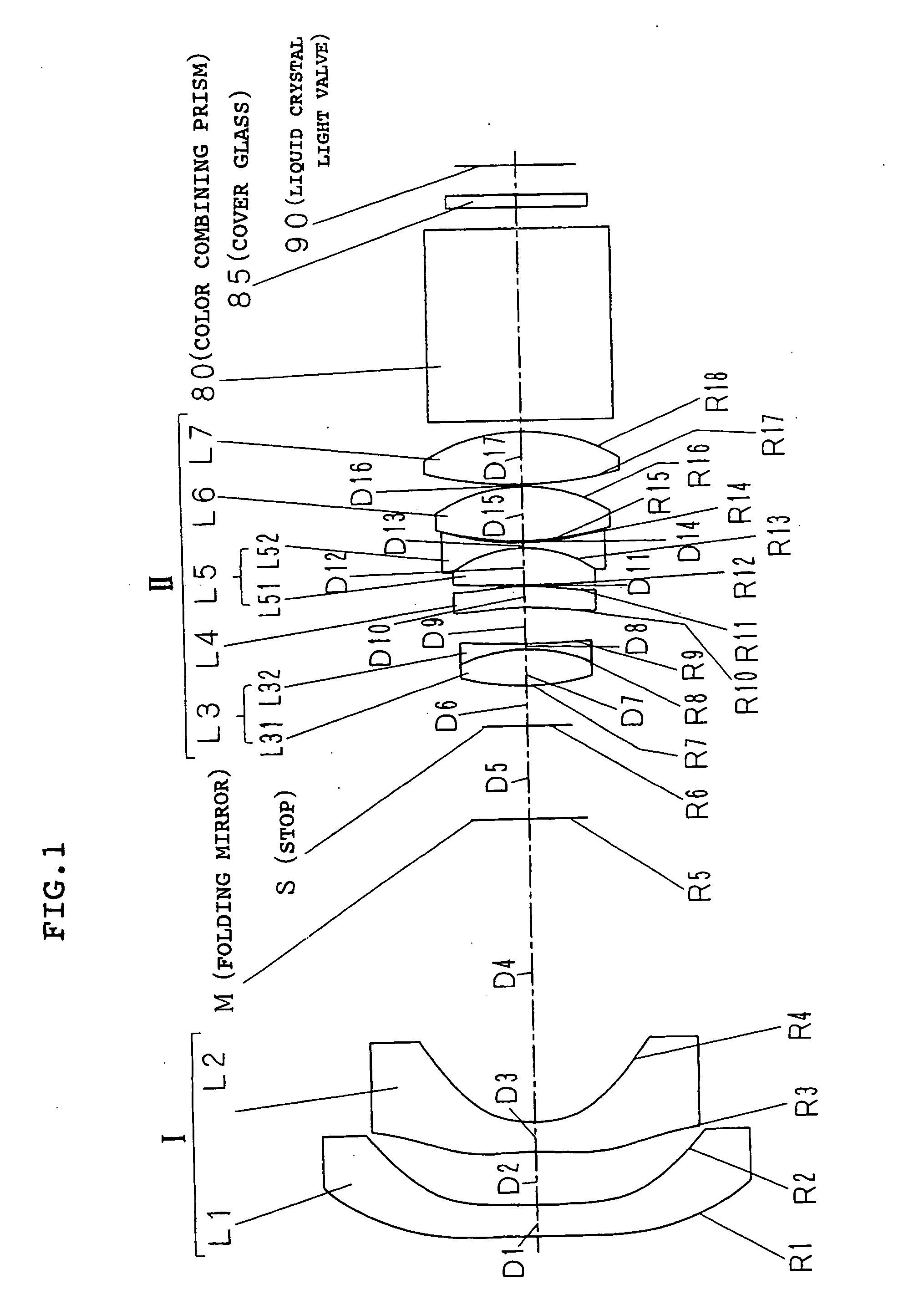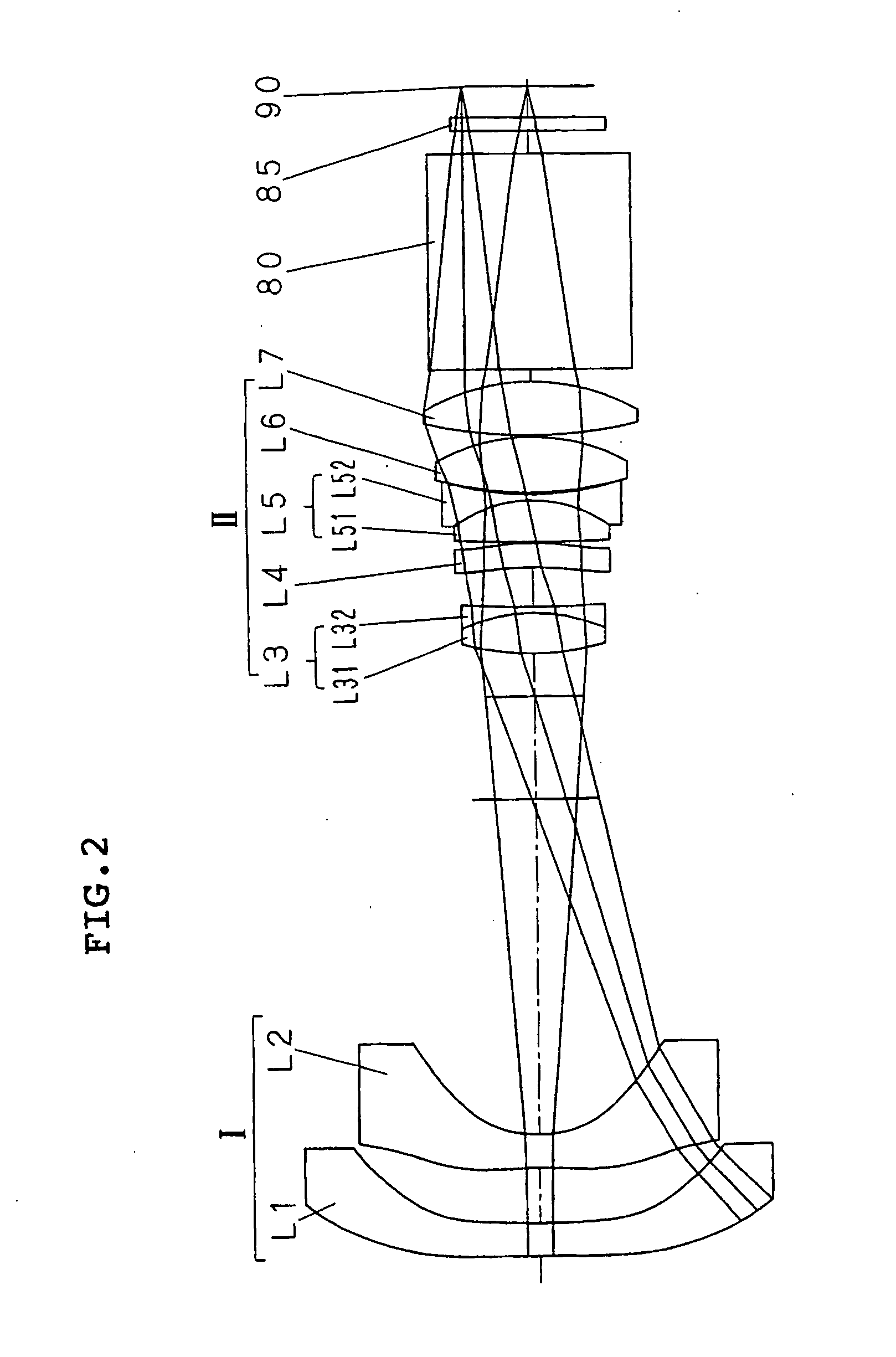Projection lens
a projection lens and lens body technology, applied in the field of projection lenses, can solve the problems of small distortion aberration in the projection lens that cannot be electrically corrected due to dot matrix display, hinders the realization of the wide angle of view and the long back, and the positional shift of the back focus due to temperature change, etc., to achieve finer images, reduce the increase of refractive index by decreasing wavelength, and achieve high focusing performance
- Summary
- Abstract
- Description
- Claims
- Application Information
AI Technical Summary
Benefits of technology
Problems solved by technology
Method used
Image
Examples
first embodiment
[0055] Referring to the accompanying drawings, a projection lens according to a first embodiment of the invention will be described below.
[0056] As shown in FIG. 1, the projection lens according to the first embodiment is one which magnifies and projects a color image of a liquid crystal light valve 90 which is of a transmission type image display device on a screen (not shown) provided on the left side of FIG. 1. Hereinafter the side of the screen is referred to as “magnified side” and the side of the transmission type image display device such as the liquid crystal light valve 90 is referred to as “reduced side”.
[0057] In FIG. 1, the projection lens is configured to arrange a first group I having a negative refractive power and a second group II having a positive refractive power in order from the magnified side toward the reduced side. A color combining prism 80, a cover glass 85, and the liquid crystal light valve 90 are provided on the reduced side of the second group II.
[00...
example 1
[0072] For the projection lens of the first embodiment, Example 1 will be described below using specific numerical values.
[0073] As shown in FIG. 1, it is assumed that a curvature radius of an ith surface from the magnified side is set to Ri and a surface interval on an optical axis between the ith surface and a (i+1)−th surface is set to Di. The values of the d line are used for the refractive index and the Abbe number. The focal distance of the whole system is represented by f (value of the e line), the brightness is represented by F / no, the angle of view is represented by 2ω, the lateral magnification is represented by M, and the projection distance is represented by L.
[0074] As is well known, in the aspheric surface, when R is set to a paraxial curvature radius, K is set to a conical constant, A3, A4, . . . , and A14 are set to tertiary, quartic, and four-teenth-order aspheric constants respectively in a Cartesian coordinate (X, Y, Z) in which the optical axis is set to the Z ...
example 2
[0080] For the projection lens of the first embodiment, Example 2 will be described below using specific numerical values.
[0081] The definitions of the curvature radius Ri, the surface interval Di on the optical axis, and the like are set in the same way as Example 1.
[0082] In Example 2, the lens configuration and the ray tracing are substantially similar to Example 1 of FIG. 2.
[0083] In Example 2, the focal distance f is set to 10.76 mm, the brightness F / no is set to 2.41, the back focus BFL is set to 37.581 mm, the angle of view 2ω is set to 91.1°, the lateral magnification M is set to −1 / 74.74×, and the projection distance L is set to 768.0 mm.
[0084]FIG. 5 shows the result of the lens design by the above-described setting, and FIG. 6 shows the result of the simulations of various kinds of the aberration in the lens design of FIG. 5. As can be seen from a graph in FIG. 6, the good results are obtained in the spherical aberration, the astigmatism, the distortion aberration, and...
PUM
 Login to View More
Login to View More Abstract
Description
Claims
Application Information
 Login to View More
Login to View More - R&D
- Intellectual Property
- Life Sciences
- Materials
- Tech Scout
- Unparalleled Data Quality
- Higher Quality Content
- 60% Fewer Hallucinations
Browse by: Latest US Patents, China's latest patents, Technical Efficacy Thesaurus, Application Domain, Technology Topic, Popular Technical Reports.
© 2025 PatSnap. All rights reserved.Legal|Privacy policy|Modern Slavery Act Transparency Statement|Sitemap|About US| Contact US: help@patsnap.com



